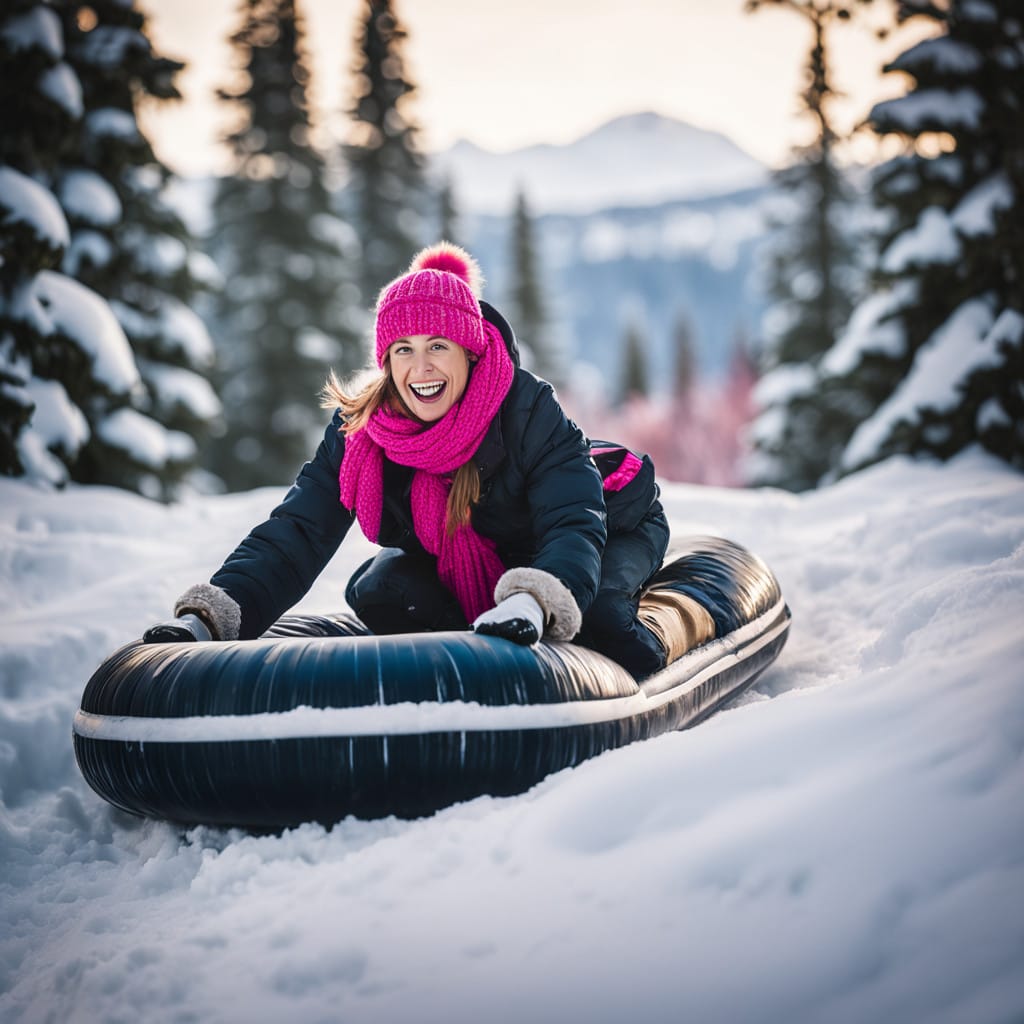
The Thrill of Snow Tubing: A Comprehensive Guide
Snow tubing is an exhilarating winter sport that has captured the hearts of adventure seekers worldwide. Known for its simplicity and accessibility, it allows participants to glide down snow-covered hills on inflatable tubes. Unlike skiing or snowboarding, snow tubing does not require extensive training or expensive gear, making it a favorite among families, youth groups, and thrill-seekers. This guide explores the sport’s fascinating origin, its rise to global popularity, amateur and professional involvement, its societal impact, and the rules that govern it.
Origin and History
The history of snow tubing traces back to the early 19th century. It began as a recreational activity in snowy regions where people sought ways to make winter more enjoyable. The concept was simple: sliding down hills on round objects, often wooden or metal contraptions. Over time, inflatable tubes became the standard for safety and comfort.
Modern snow tubing gained momentum in the mid-20th century. Ski resorts in the United States and Europe began incorporating tubing lanes into their facilities. By the 1980s, it had transformed into a structured winter sport. Resorts invested in specially designed tracks, conveyor lifts, and safety measures to cater to the growing interest.
Today, it is an established winter pastime and a competitive sport. While its origins are rooted in fun and leisure, it has evolved into an activity that blends excitement with innovation.
Global Popularity
Snow tubing’s popularity has skyrocketed, extending far beyond its humble beginnings. In North America, it thrives at winter resorts in the United States and Canada. Locations like Colorado, Vermont, and Alberta feature world-class snow tubing facilities. These venues attract tourists seeking a thrilling yet family-friendly winter activity.
In Europe, it has become a staple of alpine destinations. Countries such as Switzerland, Austria, and France boast tubing parks that rival traditional skiing and snowboarding slopes. Resorts often include night tubing experiences with illuminated tracks and music, enhancing the appeal.
Asia has also embraced snow tubing. Countries like Japan and South Korea have introduced it in their winter parks. These regions combine cultural festivities with tubing events, creating unique experiences for visitors. Even tropical countries with artificial snow parks, like Dubai’s Ski Dubai, have adopted snow tubing to bring the thrill of winter sports to their locales.
In South America, it finds a home in the Andes Mountains. Chile and Argentina offer this sport during their winter seasons, drawing both locals and international tourists. Meanwhile, in Australia and New Zealand, it is available at alpine resorts during the Southern Hemisphere’s winter months.
Snow Tubing for Amateurs: Youth and Schools
Amateur snow tubing is a gateway to outdoor winter fun for people of all ages. Youth programs and schools worldwide have integrated the sport into their winter activities. The simplicity of snow tubing makes it particularly suitable for beginners.
In the United States, schools often organize snow tubing trips to local resorts. These outings encourage physical activity and promote teamwork. Youth groups, such as Scouts or sports clubs, frequently include it in their winter schedules. These programs prioritize safety, with helmets and monitored lanes ensuring an enjoyable experience.
European schools have adopted similar practices. In Scandinavia, snow tubing is a popular winter tradition for students. Schools incorporate it into physical education classes, emphasizing coordination and outdoor engagement. In the Alps, school trips to tubing parks are common, offering students a break from traditional academics.
Asia has seen a rise in youth snow tubing participation. South Korea’s winter festivals often feature tubing as a highlight, attracting school groups. In Japan, tubing parks cater to families and school trips, blending recreation with education on winter sports.
Globally, it is celebrated for its inclusivity. Unlike sports requiring specialized skills, tubing welcomes participants of all abilities. This universal appeal makes it a cherished activity in communities worldwide.
Professional Leagues and Competitions
While snow tubing is primarily seen as a recreational sport, professional leagues and competitions have emerged in recent years. These events elevate tubing from casual fun to a competitive spectacle.
In North America, organized competitions take place at winter festivals and resort events. Participants race down challenging tracks, often featuring sharp turns and steep drops. The United States Snow Tubing Association (USSTA) oversees regional and national events, ensuring standardized rules and safety protocols.
Europe hosts annual snow tubing championships, attracting athletes from across the continent. Countries like Austria and Switzerland lead the charge, offering competitive leagues that test speed, agility, and strategy. These events draw spectators and media coverage, boosting the sport’s visibility.
Asia has also begun establishing professional snow tubing circuits. South Korea and Japan have introduced competitive leagues, blending traditional race formats with creative track designs. These events often coincide with winter festivals, highlighting the cultural significance of snow tubing.
The rise of professional snow tubing showcases its potential as a global sport. While it remains rooted in recreation, its competitive side adds an exciting dimension for enthusiasts and athletes alike.
Social and Political Significance
Snow tubing holds a unique place in society, transcending its status as a recreational activity. It fosters community bonds, promotes outdoor activity, and bridges cultural gaps.
Socially, it is a unifying force. It brings together people of all ages, backgrounds, and abilities. Families bond over shared laughter, while friends compete in lighthearted races. For communities, tubing parks create opportunities for social gatherings and celebrations.
Politically, it has contributed to discussions on accessibility and environmental sustainability. Governments and organizations invest in making tubing facilities inclusive for individuals with disabilities. Adaptive tubing programs, featuring modified tubes and tracks, ensure everyone can participate.
Environmental considerations also play a role. Resorts prioritize eco-friendly practices, such as using energy-efficient snowmaking equipment. These efforts align with broader sustainability goals, making snow tubing a model for responsible winter recreation.
Rules of Snow Tubing
It may seem like a carefree activity, but it follows specific rules to ensure safety and enjoyment. These guidelines vary by location but share common principles.
- Equipment Requirements: Participants must use approved inflatable tubes provided by the facility. Personal sleds or makeshift devices are not allowed.
- Safety Gear: Helmets are strongly recommended, especially for children. Some parks mandate helmet use for all participants.
- Designated Lanes: Tubing tracks are divided into lanes to prevent collisions. Participants must stay within their assigned lanes.
- Weight and Height Restrictions: Resorts often impose weight or height limits to ensure tube stability and safety on steep tracks.
- Seating Rules: Riders must sit in the tube’s center with legs inside. Standing or lying face-down is prohibited.
- Track Etiquette: Participants must wait for the track to clear before starting their run. Racing or overtaking others on the track is usually forbidden unless explicitly allowed.
- Lift Usage: Many parks feature conveyor belts or lifts to transport riders uphill. Participants must follow lift operator instructions.
- Supervision for Children: Children must be supervised by adults or park staff to ensure their safety.
- Prohibited Behaviors: Engaging in rough play, throwing objects, or using mobile devices while tubing is not allowed.
- Emergency Protocols: Participants must adhere to staff instructions in case of emergencies or adverse weather conditions.
Following these rules helps maintain a safe and enjoyable environment for everyone.
The Future of Snow Tubing
The future of snow tubing looks bright, with advancements in technology and growing global interest. Resorts continue to innovate by introducing faster tracks, enhanced safety features, and interactive experiences. Virtual reality (VR) snow tubing is an emerging trend, offering simulated rides that mimic real-life thrills.
Moreover, the sport’s inclusivity and environmental focus position it as a model for sustainable recreation. Snow tubing’s adaptability ensures it remains relevant across diverse cultures and climates.
In conclusion, it is more than just a winter pastime. Its rich history, widespread appeal, and social impact make it a cherished activity worldwide. Whether enjoyed casually or competitively, snow tubing promises excitement, laughter, and memories that last a lifetime.





